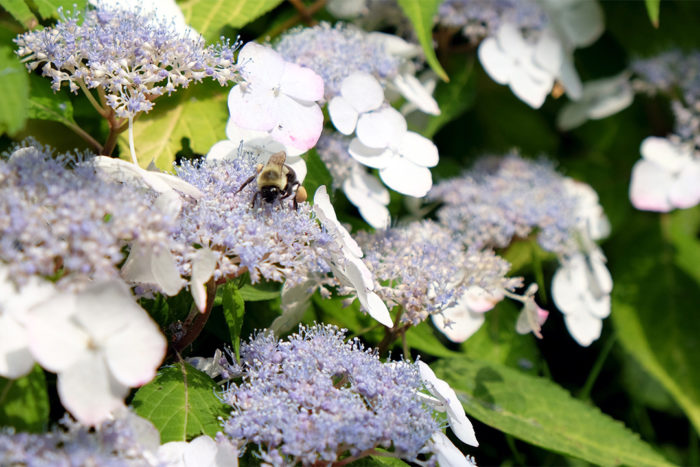
It’s not enough anymore for a garden to be beautiful. It should also be attractive. The more we welcome insects, the more we help sustain the local ecosystem’s food chains. When we cater to pollinators in particular, we support our own food supply as well.
Start by ditching the pesticides. Trust nature to find the balance to control infestations. Then include the elements that make gardens gorgeous: a succession of nectar-rich and pollen-heavy flowers from last frost to first, and host plants for moth and butterfly caterpillars.
Most pollinating insects aren’t superpicky. Some, like honeybees, will only work one species at a time, a trait that makes them efficient food crop pollinators. Others sample every dish at the buffet. Even though many species of pollinators are armed with stingers, when they’re foraging in the garden they’re peaceful companions, happy to work alongside each other and you.
Spring is easy. Almost everything that blooms is fair game. Dandelions are highly valued by beekeepers as the first reliable food source after a long winter. Let them grow in your lawn. The same goes for clover, which was only deemed a weed when weed killers targeted it inadvertently.
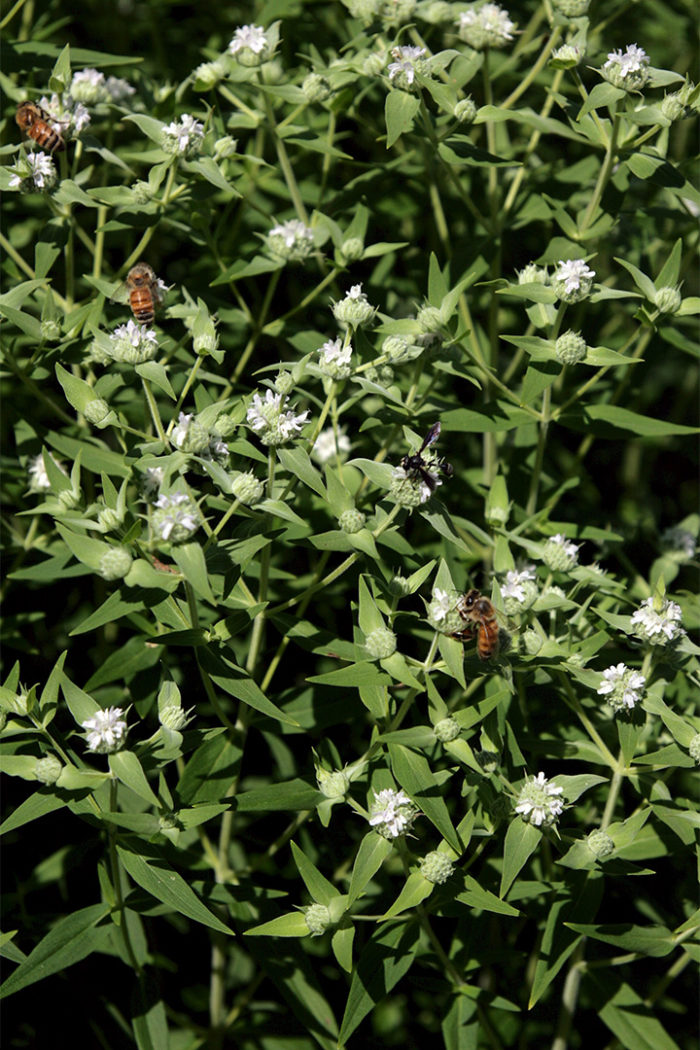
The following attract all sorts of bees, wasps, moths, and butterflies:
- Ajuga (Ajuga and cvs., Zones 3–9)
- Catmint (Nepeta and cvs., Zones 3–8)
- Anise hyssop (Agastache foeniculum, Zones 4–11)
- Lavender (Lavandula and cvs., Zones 4–10)
- Mountain mint (Pycnanthemum and cvs., Zones 4–8)
- Calamint (Calamintha nepeta subsp. nepeta, Zones 4–9)
- Plants in the mint family (Lamiaceae) are powerful pollinator magnets.
These plants have summerlong spires of tubular flowers that hummingbirds love and bumblebees bust their way into:
- Bee balm (Monarda and cvs., Zones 4–9)
- Agastache (Agastache and cvs., Zones 4–11), such as Mexican giant hyssop (Agastache mexicana, Zones 7–10)
- Salvia species (Salvia and cvs., Zones 5–11), such as blue anise sage (Salvia guaranitica, Zones 7–10).
Hydrangeas (Hydrangea spp. and cvs., Zones 4–9) have a trick up their sleeve. They attract pollinators with large, showy florets but only offer pollen and nectar from much smaller fertile florets. Some mophead cultivars, such as ‘Nikko Blue’, are all show, no substance. Bees and butterflies will thank you for choosing lacecaps (H. macrophylla normalis, Zones 5–9), because they have a platform of pollen-laden fertile flowers surrounded by showier sterile sepals. Also consider native species such as smooth hydrangea (H. arborescens, Zones 3–9) and oakleaf hydrangea (H. quercifolia, Zones 5–9), which display lovely pompoms and panicles of both fertile and infertile florets.
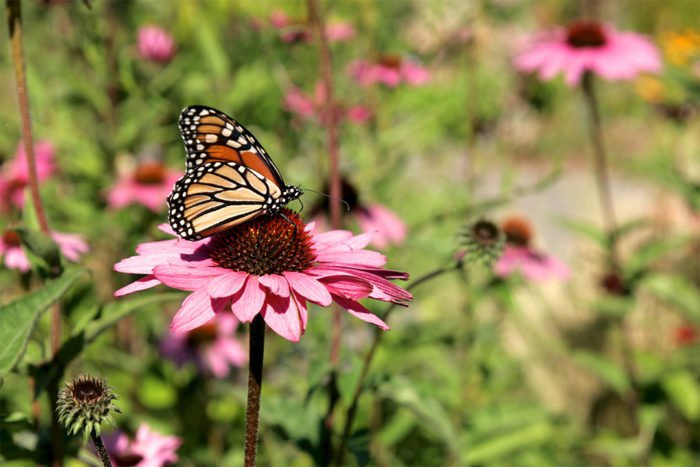
In the composite or aster family, fertility may also be sacrificed for the showiness of extra petals. Single flowering purple coneflower (Echinacea purpurea, Zones 3–9) and cultivars such as ‘Virgin’ and ‘Green Envy’ offer nectar and pollen to bees and butterflies. As a bonus, their seed heads attract goldfinches through fall and winter.
To be truly welcoming to butterflies, include caterpillar host plants in your garden plan. Monarch caterpillars feed exclusively on milkweeds (Asclepias spp. and cvs., Zones 3–9). Two-foot tall butterfly weed (A. tuberosa, Zones 4–9) blooms a brilliant orange that brightens any garden combination. Swamp milkweed (A. incarnata, Zones 3–9) is taller at 3 to 4 feet and is bubblegum pink; ‘Ice Ballet’ blooms white. Both species are hardy native perennials that self sow. Other host plants include the celery family (for swallowtail butterflies), violets (Viola spp. and cvs., Zones 3–9; for fritillary butterflies), spice bush (Lindera benzoin, Zones 4–9; for spicebush swallowtails), and native grasses (for skipper butterflies).
Don’t just take my word for it; whole books have been written on this subject (my favorite is Attracting Native Pollinators by the Xerces Society). Let your garden be your mentor. The more attractive to pollinators your garden is, the more beautiful it will be.
Kristin Green is author of Plantiful: Start Small, Grow Big with 150 Plants that Spread, Self-sow, and Overwinter, and gardens in Bristol, Rhode Island.
Fine Gardening Recommended Products
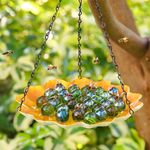
Bee Watering Station with Vivid Flower Design
Fine Gardening receives a commission for items purchased through links on this site, including Amazon Associates and other affiliate advertising programs.
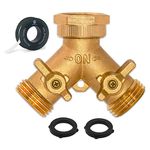
Morvat Heavy Duty Brass Y-Valve
Fine Gardening receives a commission for items purchased through links on this site, including Amazon Associates and other affiliate advertising programs.
- Fitted with US Standard NH 3/4" threads for use with most water source fittings
- Screw the 2 way splitter adapter by hand or wrench with the updated hexagonal top connection. The 360° rotatable swivel connection attaches to any water source.

Lee Valley Mini Garden Shear Set
Fine Gardening receives a commission for items purchased through links on this site, including Amazon Associates and other affiliate advertising programs.





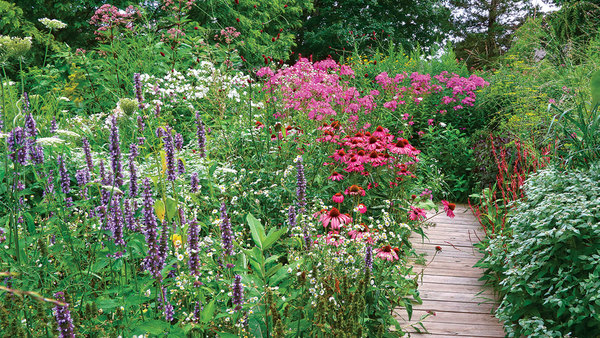
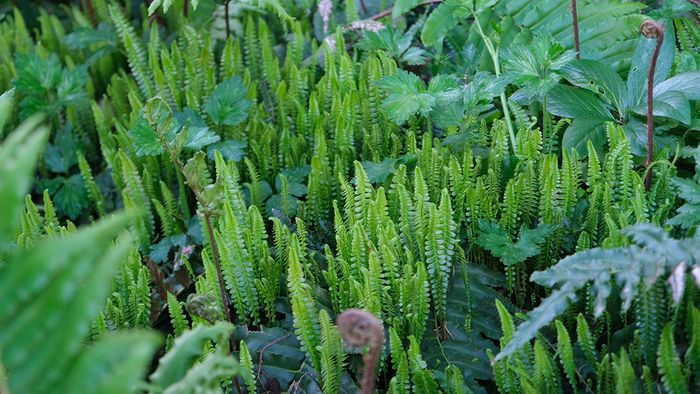
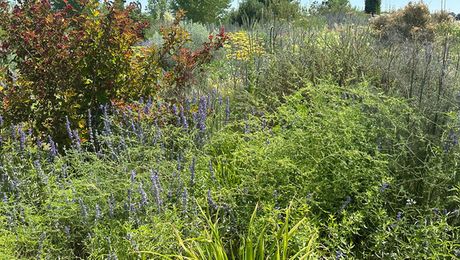











Comments
Log in or create an account to post a comment.
Sign up Log in